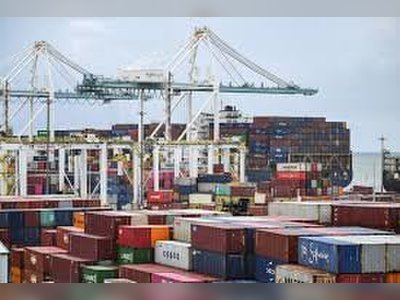
Saudi insurance industry continues growth, up 26.8 pct in Q3 2022: KPMG
Insurance companies in Saudi Arabia continued their topline growth momentum in 2022 with aggregate gross written premiums (GWPs) standing at $10.45 billion (39.28 billion Saudi riyals), rising 26.8 percent year-on-year in Q3 2022, according to KPMG in Saudi Arabia n its latest “Insurance Pulse.”
Most categories reported growth, with motor and medical segments topping the list with the biggest contributions of 78 percent and 66 percent to GWPs and net underwriting income, respectively, for the nine-month period ending September 30, 2022. A similar trend is expected for the entire year of 2022, KPMG said.
The volatility in the insurance market comparative results, which were visible until the first half of 2022, have settled now in terms of the loss ratios and the net profit after Zakat and tax. The industry-wide loss ratios and net profit after zakat and tax stand at 81.79 v and $150.6 million (566.12 million Saudi riyals) as of Q3 2022, compared to 81.36 percent and $142 million (533.84 million Saudi riyals) as of Q3 2021, respectively
The total assets and total equity of the insurance industry stood at $21 billion (79.02 billion Sai riyal) and $5 billion (19.08 billion Saudi riyals), showing an increase of 20 percent and 4.8 percent, respectively, compared to December 31, 2021.
This represented annualized return on equity of 3.96 percent as of Q3 2022, compared to 3.91 percent as of December 31, 2021, and annualized return on assets of 0.96 percent as of Q3 2022, compared to 1.08 percent as of December 31, 2021.
According to the report, IFRS 17 is the first comprehensive international accounting standard for insurance contracts issued by a company, including the reinsurance contracts leading to a transformative effect on insurers’ financial reporting.
IFRS 17 will be applicable in the Kingdom from January 1, 2023, as insurance companies are in the implementation and audit phase of the dry-runs for the Saudi Central Bank (SAMA) submission.
While these dry-runs are underway, some of the common challenges for insurance firms are the extraction of data from the current systems for input into IFRS 17 models, including the subsequent classification of the surplus distribution payable under liabilities for incurred claims, treatment of value-added tax on premium receivables under the premium allocation approach (PAA) model for calculation of liability for remaining coverage, allocation of attributable and non-attributable expenses and periodic assessment of PAA eligibility under the requirements of IFRS 17.
“The results of these dry-runs, related audit observations and learnings will lay the foundation of the quantitative disclosures relating to the impacts of adoption of IFRS 17 and IFRS 9 in the annual financial statements for the year ending December 31, 2022, as required under IAS 8, and the successful implementation of IFRS 17 in the Kingdom from January 1, 2023,” commented Salman Chaudhry, Senior Director and Insurance Lead at KPMG in Saudi Arabia.
The boost in the digital transformation in the last two-and-a-half years in the insurance sector has been most visible in the way companies now interact with their customers through digital channels, he stated.
“Digitalization has become the norm, with its benefits now widely recognized by the industry. Companies will have to increase their focus on enhancing their cybersecurity and data privacy infrastructure to protect sensitive customer data,” Chaudhry concluded.
The volatility in the insurance market comparative results, which were visible until the first half of 2022, have settled now in terms of the loss ratios and the net profit after Zakat and tax. The industry-wide loss ratios and net profit after zakat and tax stand at 81.79 v and $150.6 million (566.12 million Saudi riyals) as of Q3 2022, compared to 81.36 percent and $142 million (533.84 million Saudi riyals) as of Q3 2021, respectively
The total assets and total equity of the insurance industry stood at $21 billion (79.02 billion Sai riyal) and $5 billion (19.08 billion Saudi riyals), showing an increase of 20 percent and 4.8 percent, respectively, compared to December 31, 2021.
This represented annualized return on equity of 3.96 percent as of Q3 2022, compared to 3.91 percent as of December 31, 2021, and annualized return on assets of 0.96 percent as of Q3 2022, compared to 1.08 percent as of December 31, 2021.
According to the report, IFRS 17 is the first comprehensive international accounting standard for insurance contracts issued by a company, including the reinsurance contracts leading to a transformative effect on insurers’ financial reporting.
IFRS 17 will be applicable in the Kingdom from January 1, 2023, as insurance companies are in the implementation and audit phase of the dry-runs for the Saudi Central Bank (SAMA) submission.
While these dry-runs are underway, some of the common challenges for insurance firms are the extraction of data from the current systems for input into IFRS 17 models, including the subsequent classification of the surplus distribution payable under liabilities for incurred claims, treatment of value-added tax on premium receivables under the premium allocation approach (PAA) model for calculation of liability for remaining coverage, allocation of attributable and non-attributable expenses and periodic assessment of PAA eligibility under the requirements of IFRS 17.
“The results of these dry-runs, related audit observations and learnings will lay the foundation of the quantitative disclosures relating to the impacts of adoption of IFRS 17 and IFRS 9 in the annual financial statements for the year ending December 31, 2022, as required under IAS 8, and the successful implementation of IFRS 17 in the Kingdom from January 1, 2023,” commented Salman Chaudhry, Senior Director and Insurance Lead at KPMG in Saudi Arabia.
The boost in the digital transformation in the last two-and-a-half years in the insurance sector has been most visible in the way companies now interact with their customers through digital channels, he stated.
“Digitalization has become the norm, with its benefits now widely recognized by the industry. Companies will have to increase their focus on enhancing their cybersecurity and data privacy infrastructure to protect sensitive customer data,” Chaudhry concluded.











